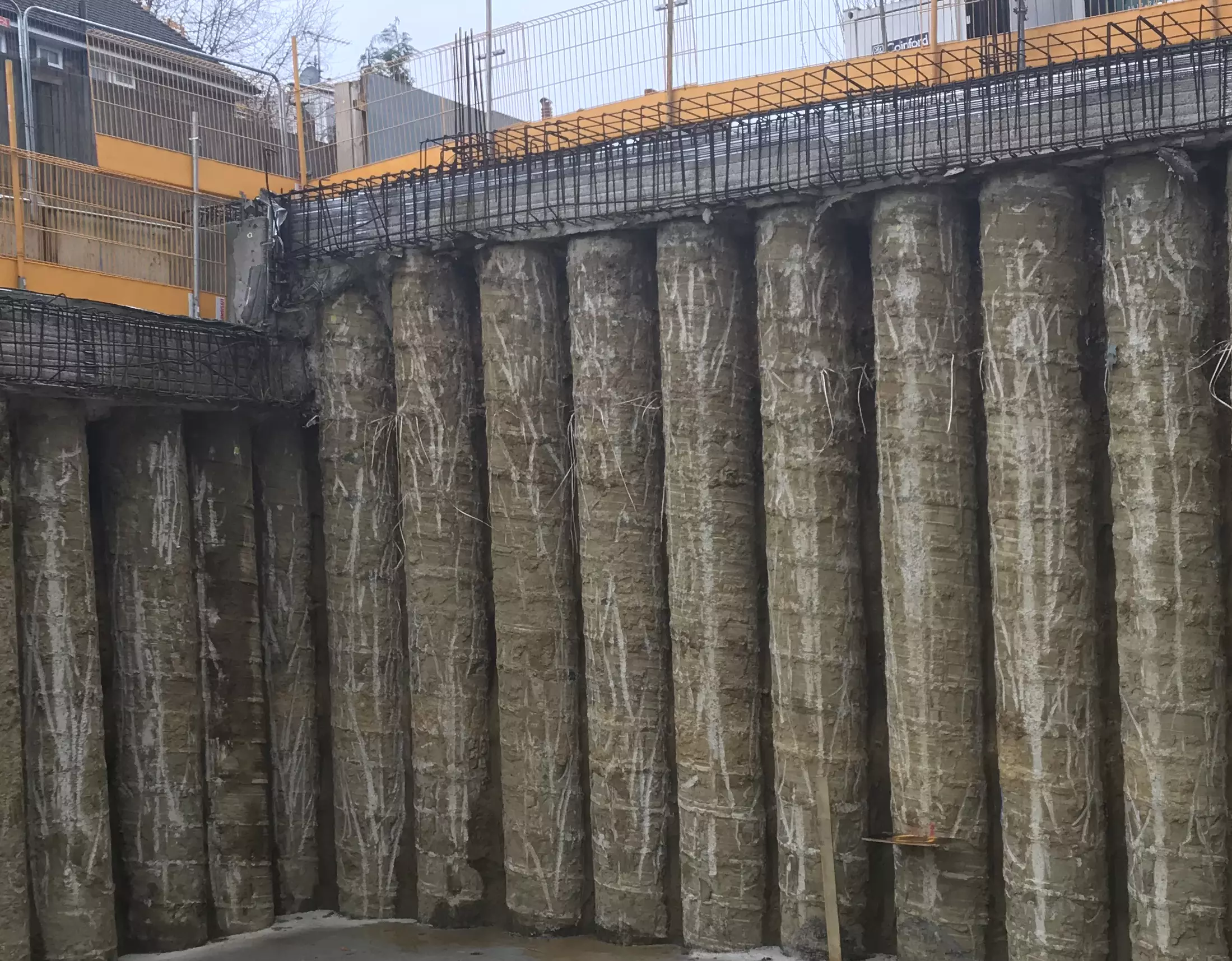Contiguous piled walls are formed by a series of adjacent piles that create an earth retaining structure, either as a cantilever or a propped cantilever wall. These walls consist of unconnected, cast-in-situ concrete piles placed with small gaps between them, using techniques like CFA (Continuous Flight Auger) or rotary bored piles (replacement piles). Compared to other lateral soil support systems, contiguous piled walls are simpler and more cost-effective, especially for small to medium excavation depths, offering reduced construction costs and shorter timeframes.


Construction sequence
Construct the pile using either the rotary bored or CFA (Continuous Flight Auger) technique.
Install the pile cage reinforcement to enable the pile to withstand bending forces.
Allow the concrete to reach its design strength.
Install a capping beam to connect the piles, ensuring the wall functions as a monolithic structure.
Begin the excavation to the required formation level.
Install temporary and/or permanent propping where required by the design.
Fields of application
New basement structures, especially in urban areas.
Additional support for highways prone to embankment slippage (slope stability).
Bridge abutments carrying horizontal loads.
Embankment cuttings.
Environmental impact
Has a positive environmental impact by facilitating earth retaining solutions with the minimum amount of excavation (rather simple "production / installation" procedure).
Piling with comparatively low level of noise, vibration and deformation of adjacent soil mass, therefore suitable in crowded urban or industrial contexts.
Technical specifications
Temporary or permanent earth-retaining structure: restricting movements of the soil on the retained side.
The unconnected piles are not suitable for retaining water or groundwater ingress unless jet grouting, 'gunite' or 'shotcreting' seal the piles and remedy ingress.
Due to rotary drilling techniques, system is applicable in a wide range of soil conditions: granular soils, most cohesive soils, soft layers of rock. However, the contiguous wall (with a gap between the piles) usually renders unsuitable for structures retaining fine granular soils with a high water table, soft clay and weak organic soils due loss of fines between the piles.
Unsuitable in hard clay and hard rocks.
Piles are usually constructed with a nominal gap between the piles of 100 mm to 150 mm typically.
The piles are designed to carry lateral bending forces and are normally tied together at the top with a capping beam to ensure they act monolithically.
Depth of excavation is limited by the length of the pile cage reinforcement introduced into the piles (maximum 18.0 m for CFA and may become more economical for diaphragm wall systems at depth).
Ability to support an axial loading (point load and/or line load distributed through capping beam.
